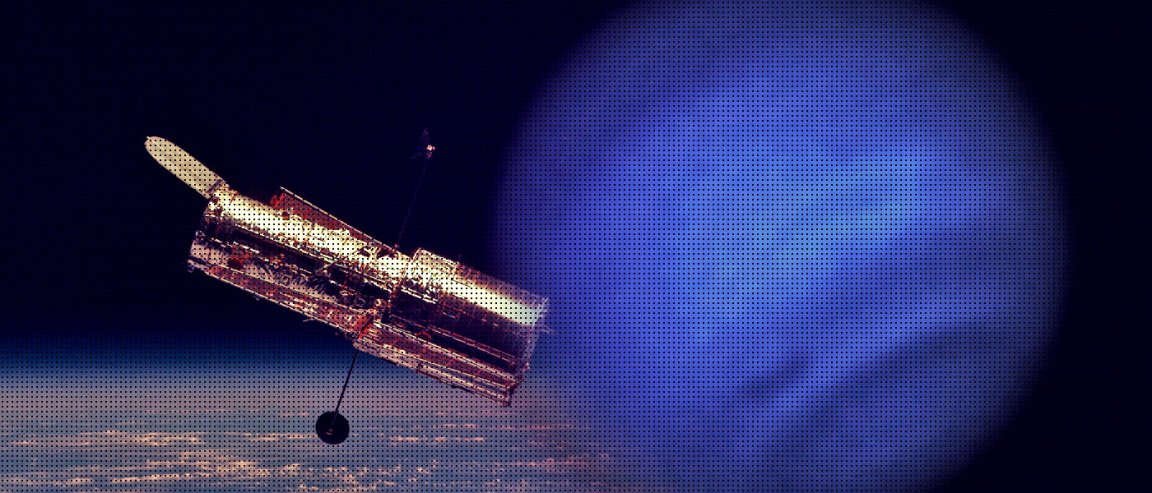
It wasn’t too long ago that schoolchildren were taught that our solar system ends with Pluto—and that its outer reaches held nothing but empty black space. But ambitious probes and new technology continue to reveal that the space beyond the last true planet is full of movement and mystery—and that its population of ancient objects may hold the keys to the origins of our solar system itself.
Neptune—a deep blue ice giant, and the eighth planet from the Sun—was visited just once by the Voyager 2 probe in 1989. It is the gateway to Trans-Neptunian space: a densely populated region known to host 4/5 dwarf planets.
What Lies Beyond Neptune?
Though earlier models of the Solar System named Pluto as the ninth and final planet from the Sun, more sophisticated observations revealed that Pluto was in fact a large dwarf planet—merely one of 700,000 currently recognized by the International Astronomical Union’s (IAU) Minor Planet Center.
In addition to minor planets, these Trans-Neptunian Objects, or TNOs include long and short period comets; asteroids; and a mass of small icy objects formed long ago in the Sun’s protoplanetary disk
Basically, trans-Neptunian Space is divided into three large fields; the Kuiper Belt, the scattered disk and the Oort cloud. Here’s a closer look:
The Kuiper Belt:
Beyond the orbit of Neptune, thousands of TNOs are contained within a thick band called the Kuiper Belt. Objects in the Kuiper Belt are thought to be remnants from the formation of the solar system. The difference is, most failed to coalesce into fully-fledged planets.

These bodies keep to largely stable orbits around the Sun and rarely cross Neptune’s orbit. The most famous occupant of the Kuiper Belt is, of course, Pluto: one of a number of planetoids large enough to have their own moons.
The Scattered Disk:
Beyond Neptune, the boundaries blur. The outer reaches of the Kuiper Belt and beyond take on new characteristics and become the scattered disk: a less populated place of cold, volatile objects with extreme and unstable orbits that bring them near the Sun in cycles that range from decades to thousands of years.
Though astronomers once believed that periodic comets—particularly those with orbital periods lasting less than 200 years—originated in the Kuiper Belt, it‘s now believed that most of these visitors actually come from the coldest parts of the scattered disk—perhaps even beyond.
The Oort Cloud:
The Oort Cloud is the last bastion of Trans-Neptunian space—a poorly-understood region that contains the earliest, most diffuse components of the solar system. This spherical shell of dark, cold objects is believed to be the last fragments of the Sun’s protoplanetary disk, pushed ever farther from the Sun as the inner planets, particularly Jupiter, formed and grew. Propelled by Jupiter’s massive gravitational effects, these small objects traveled to the fringes of the system, where they now fall under the influence of galactic perturbations and the movement of passing stars.

Furthermore, astronomers currently believe that those interstellar forces push Oort Cloud objects—typically long-period comets that were knocked into highly elliptical orbits around the Sun—back into the inner solar system. As they venture inward, the Sun heats up ice and other volatiles—creating the characteristic comet tails we see in the night sky.
Probes such as New Horizons and Rosetta have certainly brought the outer solar system to life for Earthbound observers. These missions and other studies add new pieces to the puzzle of the solar system’s earliest moments—whilst opening intriguing new possibilities for discovering life beyond Earth. For astronomers, the icy reaches of Trans-Neptunian space may hold the answers to old questions—and pose countless new ones for decades to come.